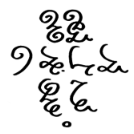All Activity
- Past hour
-
Thank you very much! This is a very gratifying discovery. Thank you for the time you have given to the composition. I wish you all the best.
-
Henry Ng Tsz Kiu started following Piano Sonata no. 5 complete!!
- Today
-
I do agree with you on the issue of balancing, and I can also see how the melodic choices I made didn't contribute much toward melodic development. As I said in my response to the initial feedback you gave, I went through with a new friend of mine who was willing to take his free time to instruct me on some of the Music Theory material that I was unfamiliarized with, that related to some of the things he noticed wrong with it, which were much in line with what your critique of it has been so far. So moving forward, I'll be looking to improve upon what you've mentioned, among other things as well. do always appreciate your feedback, and will be using this information to further progress my skill in dabbling with composition. And I do hope that you were able to enjoy this piece, despite the issues with it. I feel that with this one, I at least had some awesome chord modulations 😅 Especially there at the end, modulating back to the original key of F minor, just before the transition from strings harmonies to brass harmonies.
-
Hi Petr..... Let me one of the 1st to Congratulate you on a Fine-Performance Your compostion has a Professionalism equal to what one hears, on Mainstream-commercial Classical music Radio stations.
-
Petr Kopuletý started following My first big composition
-
Hi everyone, I would like to share with you my first major composition: a string quartet. My compositional style is evident in it, which is quite unusual, but at the same time I think it is accessible to a wider audience. I'd appreciate it if you gave it a listen! Thank you! https://youtu.be/WPfU9OKB8Aw?si=EFZEiZDdlTbWXOnu
-
Petr Kopuletý joined the community
-
Jqh73o started following Piano Sonata no. 5 complete!!
-
ComposaBoi started following Piano Sonata no. 5 complete!!
-
I finished the other two movements hooray!! Here's the YouTube upload. Please let me know what you think so I might apply the advice for future piano works 🙂 As for the piece itself, it's so personal to me I'm not willing to change anything, though I recognise it's not flawless. I think it is my very best piano piece and I'm extremely proud of it despite its issues. I'll do a rundown of the piece real quick so ya'll know what to expect. Movement 1. Sonata form, both themes are derived from the same rhythmic idea. A theme for desolation and a theme for consolation, which alternate in rotations becoming less and less certain until neither resolve. closes on a 6 4 chord. attaca into... Movement 2. Ternary form. A is a waltz with violent interruptions. B is more restless and dramatic. The return to A is based on first movement closing 6 4. Ending of A is infected with B motifs. Closes with a satisfying cadence at last. Movement 3. Ternary form. This movement is meant to be "looking back" at the events of the previous movements. B section is turbulent again. A section returns. The movement closes with a chorale "prayer." attaca into... Movement 4. Sonata form. Opens with a return to the consolation motifs from movement 1. First theme is dramatic and modulates constantly. Second theme is a combination of consolation and prayer. The climax of the development (and I think the climax of the whole piece really) with the minor version of the consolation theme from the first movement is in E minor which is a tritone away from tonic key. Recap has no proper second theme, only fragments. It ends resolved on a single note all by itself. All alone. Thank you for listening and for any feedback :3
-
Yeah that chord i was wanting to change in bar 14. As for experimenting with rhythm I sorta kept it simple just cuz I don't really have lots of experince playing this type of music. Right now I'm learning Schoenburgs op11 so hopefully some of his ideas rub off on me. I usually write what I can play but even still I think I could've added triplets or sixteenth notes at the least to vary it. I'll see about adding more experimentation in terms of rhythm.
-
Hey @Rafael Avila! Thanks for posting this here! I enjoyed some of the harmonies created by this set! The set itself is interesting being created by two 5ths a half step apart (A, Bb, E, F). I think the piece sounds kind of strange sometimes at points where there's strong consonances where I would expect a dissonance (like at bar 14, beat 2). Also, this is a good experiment in using a set (presumably the first time you've tried writing a piece using a set?). But it does come off kind of like an exercise because of the constant, mechanical and metronomic pulse and almost exclusive use of only 8th notes and quarter notes. You have a ritardando towards the last chord which does function well to make the piece feel like it concludes well (and the last chord is also pretty cool - a Bb maj7 #11)! But the rest of the piece kind of ambles along at a constant unchanging tempo which feels very pedestrian. There are so many more individual musical gestures to be made using triplets and more complex rhythms and quicker or accelerating and decelerating note values. I just feel like there is so much more experimentation to be made here - but it's definitely a good first try at a piece using a set! Thanks for sharing!
-

How do non-musicians listen to music?
FILMSCORE replied to Striped Cow's topic in Composers' Headquarters
How do non-musicians listen to music? Their all waiting for a FEELING.........if you cant provide that FEELING..........You've lost them,Theyv'e Clicked-Off . "You never get a second chance to make a first impression" -
PeterthePapercomPoser started following Ceral no 1
-
Rafael Avila started following Ceral no 1
-
Hi this is a piano piece I'm working on, it's almost done and needs some touching up. It uses a set. Would love feedback and thoughts on it.
-
PeterthePapercomPoser started following 🌎 World-International Music
-
Really good work! I love the trills in the winds against the prominent lower strings that starts around the 2:00 mark. The one thing I would advise is with the snare part starting at measure 48 could be a little repetitive. Maybe adding in an upbeat hit every other measure to break it up could work.
-
I couldn't agree more. I feel like your music has really blossomed since taking hold of this approach. This piece is so peaceful to listen to, and definitely crafts an image in my mind. I can't help but think of all the solo adventures you've been taking, especially the ones through nature. I feel like I know the beauty of HK without ever having been there by listening to this music. As others have said, the impressionism, quartal figures, pentatonics, and pedal tone are featured and explored really well. You're already so great at using thematic material wisely, and blended with your emerging uniqueness of voice couples so well. I sort of like the sudden key changes, as it's like bursts of color very reminiscent of the style. Well done Henry, I can't believe you're already almost done with this set of pieces!
-
Henry Ng Tsz Kiu started following 🌎 World-International Music
- Yesterday
-
Alex Weidmann started following Hymn to Aphrodite - Tone Poem for Band
-
Hymn to Aphrodite - Tone Poem for Band
Alex Weidmann replied to RochaTipoPedra's topic in Orchestral and Large Ensemble
Nice work! I like the dreamy quality you evoke with your orchestration, and the mood changes you create. The lamentoso sections were my favourite. -

Tale of a Forgotten Epitaph (sonatina)
Luis Hernández replied to Jqh73o's topic in Piano Music, Solo Keyboard
A very interesting work. Perhaps it is a bit too “intellectualized”. Let me explain: there is a succession of modes and tonalities, some a bit “infrequent” that, given the strong character they have, the transitions between them sometimes don't work too well. For example between the second theme in Bb acoustic (Bb Lydian dominant?) and E minor. Then abruptly one ends and the other begins. At other times it works much better. The first part has a strong sonority because of the phrygian question (what is Dorian Eb phrygian? maybe Eb phrygian with sixth?). From measure 60 on there are a lot of chords in the bass part that make it sound heavy and undefined. Especially because they are sounding for a considerable period of time. There are “rules” for using chords in that part of the tessitura, in general, but the main thing is to open-lighten the chords. The truth is that the piece is an intense work and the most remarkable thing, from my point of view, is that the counterpoint sounds very good. One observation is, also a personal matter, there are octaves for almost all the development. I don't know, Liszt used them everywhere, but he knew very well what he was doing and when. To me it sounds excessive and in the end there is no contrast. In other words, except for the beginning, the texture is very dense all the time. -
FILMSCORE changed their profile photo
-
Weather its 🇯🇵 japanese food, 🇨🇳 Chinese food, 🇸🇦 Arabian food, 🇫🇷 French food, or ✝️ Latin America hamburgers They all have their own Unique-Flavours..........................
-
- flavours
- world-international music
- (and 6 more)
-
Hi again @UncleRed99! My perception hasn't changed by much, but I think I can better explain why I perceive the piece the way I perceive it. I can hear that you definitely intend there to be a main melody leading the piece from beginning to end but there are a few factors that (in my opinion) prevent this from being a lucid listening experience for the listener. Sometimes the melody is just overpowered by chords in the orchestra played loudly while a single solo instrument is playing the melody and it doesn't really get heard. The most obvious example being the bass clarinet melody in bar 5. There are also other examples where you kind of create a polyphonic/heterophonic texture where it becomes kinda hard to hear which instrument is supposed to be the focus or main melodic line. There are ways to make polyphonic/heterophonic textures work though but that would necessitate them being more self-similar and use a higher economy of means to achieve a more obvious audible relation to each other. While if that isn't achieved, then it can end up sounding like you're just noodling around in a certain key. Although I don't want to neglect to give you credit where credit is due. You definitely have a recognizable motif that permeates this piece: It's just that this is a very short recognizable motif that is just repeated throughout the piece without really being used to develop it by using it as the dynamo and origin of all of your other melodic material. When the other material isn't connected together it can sound dissolute and lacking in direction or focus. That's my perception of the piece. I'm glad you're so determined to continue to improve and I hope some of what I said can help you further on your journey!
-
I hope you will consider taking another look at this, whenever you’re able to find the time for it 🙂 I’ve made many improvements to it since. I know that my form / structure is a bit abstract/abnormal. I met a friend on Musescore back when I wrote “The Long arctic midnight suite” in 11/8 time, and he also edited my score “Lamentation” on his own volition. we sat in a discord call for like 5 hours yesterday, analyzing one another’s scores. He’s a composer and is on his way to getting his masters in composition, and he performs as a classical pianist. He gave me some material on Binary and Ternary Form structure, and stated that I’d probably be most interested in Sonata structure.. (all of which I was clueless about until now 😅) He says he thinks this is one of the better compositions I’ve written, based on the modulation, and the chord progressions I’ve used, as well as the complexity in voicings within the chords and the melodic lines. Although, the form could’ve been executed in a way that would’ve been easier to digest. He called this “through composed” mostly, with some returns to a main motif. with this context, I believe what I’ve done, here, could be better understood, in addition to the changes I’ve made. I value your feedback as well as @Henry Ng Tsz Kiu’s feedback in this forum, given how methodical and detail oriented you both tend to be. I’m just looking to improve upon what I already know, learn what I do not know, understand what I have accomplished effectively, and have things to reflect on in regard to what was ineffective or poorly executed. i know I’m just an autodidact who does this as a hobby, but I’m a bit of a perfectionist who’d love to be that outlier independent composer who can write scores that are educated, well executed, and well received by the internal industry audience. 🙂 thank you in advance, Peter !
- Last week
-

Double Fugue in E-flat major
Fugax Contrapunctus replied to Fugax Contrapunctus's topic in Piano Music, Solo Keyboard
Agreed, my piano soundbanks are way too mellow for this fugue's overall character. The first subject, as pointed out by one YouTube commenter, has the exact same initial five notes as Bach's 5th Brandenburg Concert's 3rd movement. The key isn't that far off too, a mere semitone above the original in D major. It's both fantastic and mesmerizing how an entirely different piece could come out of such a similar foundation: such is the mastery over melody and harmony Bach simultaneously displayed in his fugal subjects, that we all should strive from learn from him. As for the 2nd subject, it first apears in b. 32 as you correctly observed, and also in b. 84 in non-strict stretto with itself, kind of like a chain of false entries. That was indeed the purpose of the whole cadenza: to provide a less polyphonically dense passage for the sake of letting the listener rest before the final reexposition. The chromaticism you noticed also inversely follow many of the previous modulations employed throughout the whole fugue up until that point. That would normally be the ideal development, but unfortunately the assymetries between both sequences resulted in unbearably clashing dissonances when trying to superpose both subjects on top of one another in invertible counterpoint. Trying to have them in stretto didn't have much better to offer, as it barely served as one, rather sounding like a sequentially yuxtaposed entry on account of how late the 2nd subject could enter in conjunction with the first one without an inexorable clash of minor 2nd intervals. As such, it appeared as though these subjects are way too independent from one another, to the point I couldn't manage to have them work with each other lest the counterpoint and harmonies became severely riddled with intolerable dissonances. Nevertheless, it would have been a pretty nifty idea, had I been willing to modify all iterations of the first subject to account for it while progress on the piece was still underway. Unfortunately however, I am currently only editing this fugue for minor corrections, and a full revamp making either subject fit for stretto or invertible counterpoint with the other will have to wait at least as few years before I revisit this work in hopes of further expanding it. Gracias por todo, Luis. 🙂 -
Installment 3 of posting my old pieces, please enjoy this lied from 2018
-
Hymn to Aphrodite - Tone Poem for Band
Fruit hunter replied to RochaTipoPedra's topic in Orchestral and Large Ensemble
I like it sounds nice. Definitely a large contrast between the first part and kind of follows the structure of ABA. At “ritmico” the crash cymbals would sound better if they were choked. with the audio The slower parts were not really as clear and sounded kind of muddy and blurry, but that was probably a playback thing. Nice work with the low brass and the feature with that. -
.thumb.png.8b5b433a341551e913a34392660bc95b.png)
January 20, 2025
PeterthePapercomPoser replied to BipolarComposer's topic in Orchestral and Large Ensemble
You're welcome! And thanks for your reactions and interaction! Perhaps you'd be interested in reading this particular post in the "Why I compose music on paper" thread? In that post I also reveal my own struggles with mental health and bipolar disorder. Would you be interested in this topic? What keeps you from reviewing more works? -
Alex, Thanks for listening ... and more so .... thank you for referring me to Hindemith's "Mathis De Maler". What a beautiful work! I will listen to it a few times more ... so much to appreciate in its orchestration and thematic development. Mark












